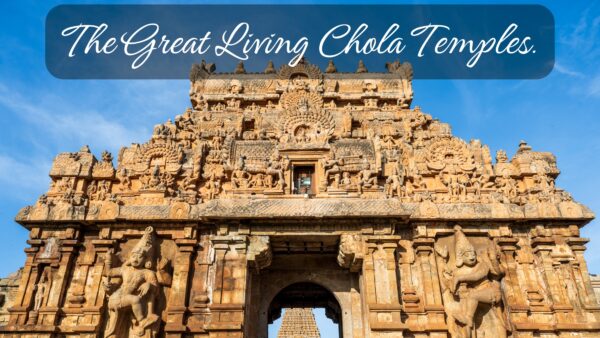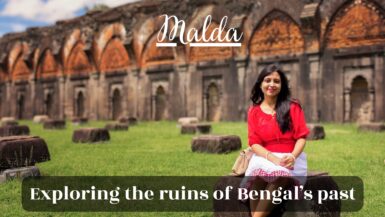There is no dearth of temples in Tamil Nadu. In fact, it is believed that almost 40,000 temples dot the sacred landscape of this Indian state. Tamil Nadu is, therefore, aptly called the ‘land of temples.’ Every royal dynasty which once ruled different parts of ‘Tamilakam’ undertook zealous temple–building projects, and their handiworks have added new dimensions to the rich Tamil culture. The Dravidian temples reached a new height under the Chola dynasty. The tradition of Dravidian temple architecture, which had been set in motion under the Early Chalukyas of Badami and flourished thanks to the innovative ideas of the Pallavas of Kanchi, fully matured under the Cholas of Tanjore. The triumvirate of temples built by the extraordinary Rajaraja I and his equally remarkable heirs has survived as a living testimony, notwithstanding its inanimate stone and granite structure, of the grandeur of the Chola Empire. This temple trio – Brihadisvara of Thanjavur, Brihadisvara of Gangaikondacholapuram, and Airavatesvara of Darasuram – is referred to as the ‘Great Living Chola Temples’. They were declared a UNESCO World Heritage Site in 1987. The Dravida style of temple architecture reached its zenith with these three temples, and they continue to fascinate historians, art enthusiasts, and tourists alike.
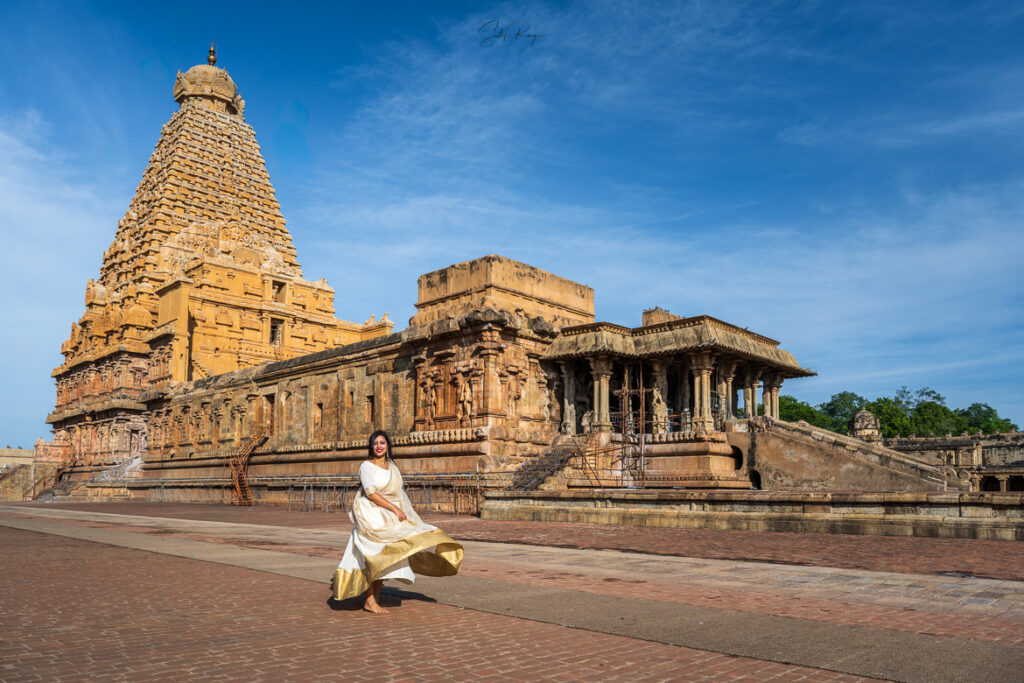
Table of Contents
Who were the Cholas:
The Chola dynasty was one of the most formidable ruling dynasties of southern India. Along with the Pandyas and Cheras, they constitute the ‘Muvendar’ or ‘Three Crowned Kings’ of the Tamil region. With their heartland lying in the fertile tracts of the Kaveri River, the Chola imperial banner extended its sway as far as the Ganga in the north, and Sri Lanka, the Malaya peninsula, and other islands in southeast Asia.
The early Cholas are mentioned in the Rock Edicts of Mauryan emperor Asoka, the Greek text ‘Periplus of the Erythraean Sea’, and the Buddhist scripture Mahavamsa. The Sangama literature details the feats of the early Chola rulers, such as the legendary Karikala the Great.
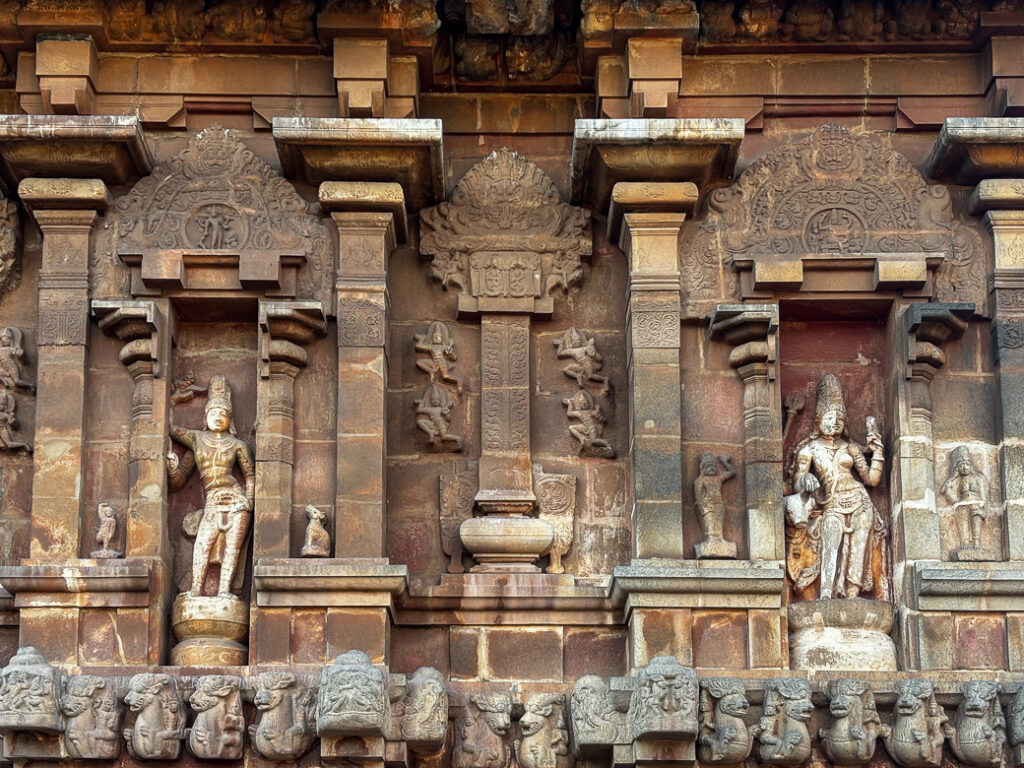
The exultant saga of the Imperial Cholas started in the 9th century CE when Vijayalaya established a small kingdom around Tanjore in 848 CE. Eventually, it evolved into an enormous empire under his ambitious and gifted successors such as Rajaraja I (arguably the greatest Chola emperor), his equally brilliant son Rajendra I, Kulottunga I, Rajaraja II, and Kulottunga III.
By virtue of exceptional naval strength and strategies, Rajaraja I and his successors conquered Sri Lanka, Lakshadweep, Maldives, parts of Myanmar, and the Malaya peninsula. On the other hand, they subdued the Cheras, Pandyas, Keralas, Chalukyas, Kalingas, and even the Palas of Bengal.
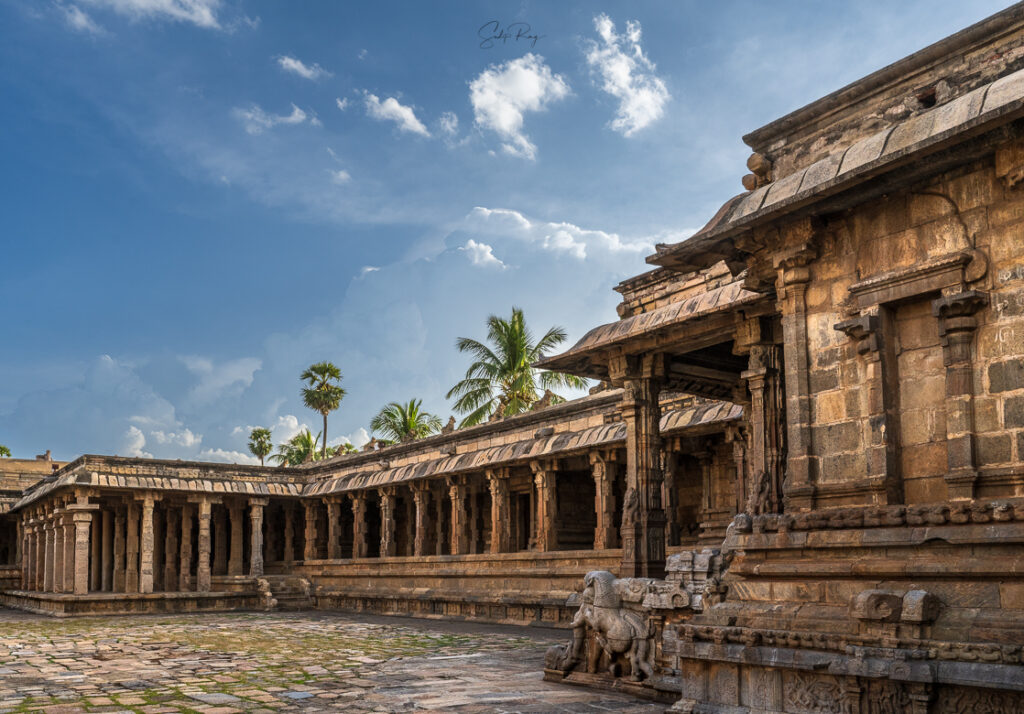
In addition, the Chola emperors were mighty builders. The early Chola rulers mostly commissioned renovation and restructuring of already existing temples such as the Nataraja Temple of Chidambaram and the Gomuktisvara Temple of Tiruvaduturai. It was Sembiyan Mahadevi, mother of Uttama Chola, who surpassed all her Chola predecessors in the volume of her donations and in her commitment to temple construction. She commissioned as many as nine temples at Konerirajapuram and Kuttalam, and they constitute the early Chola style of temple architecture.
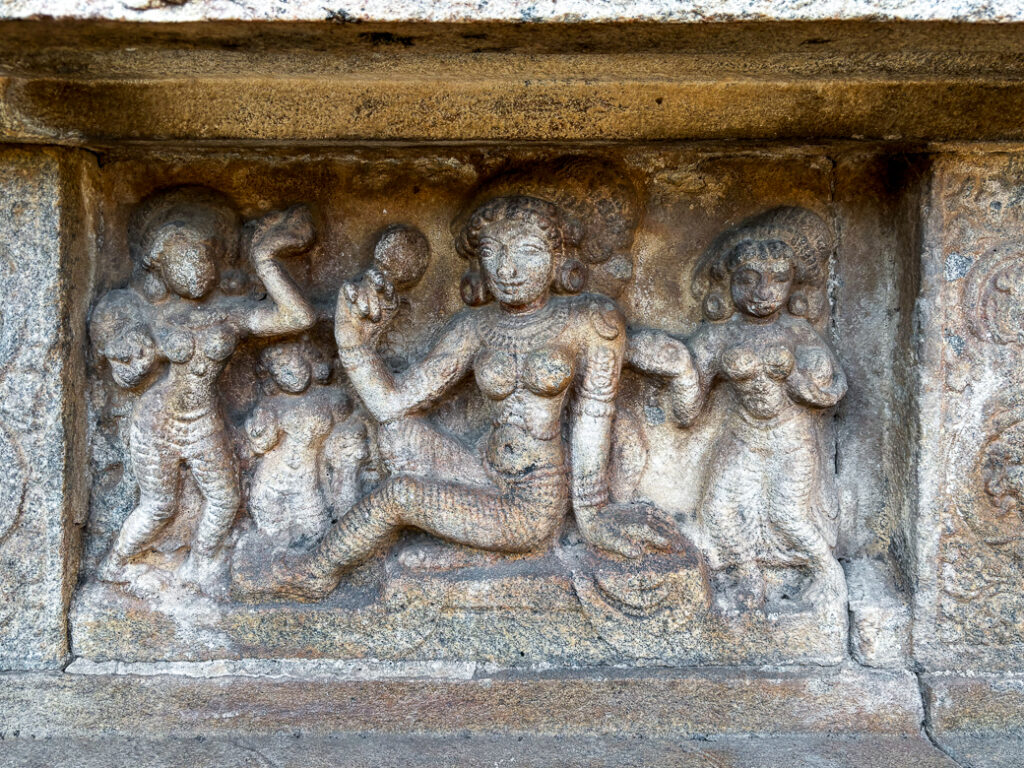
The mantle of Sembiyan Mahadevi regarding the construction of temples was ably taken over by Rajaraja I, Rajendra I, and Rajaraja II. These three Chola stalwarts built three monumental temples, which constitute the finest specimens of South Indian architecture.
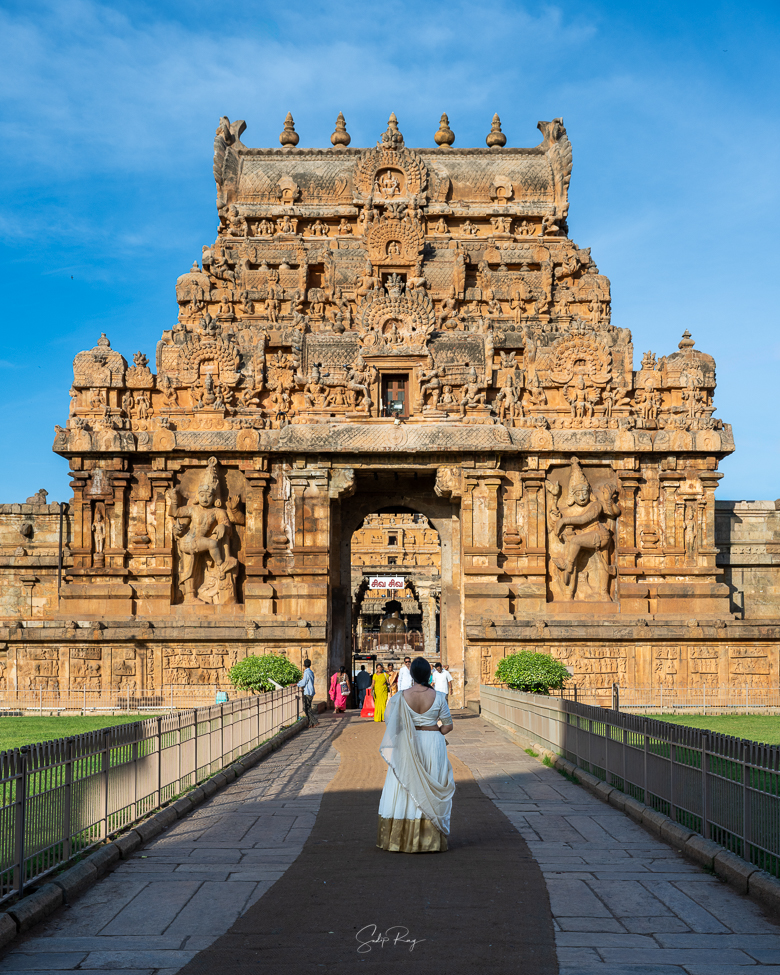
A. Brihadisvara Temple, Thanajavur:
Rajaraja I’s magnum opus Brihadisvara Temple is also known as Rajarajesvaram (after its patron) and Thanjai Periya Kovil (Thanjore’s Big Temple). The construction began in 1003 CE and was completed in 1010 CE. Dedicated to Siva, this colossal temple still stands as a symbol of the prowess of the mighty Chola empire as well as the splendour of Rajaraja.
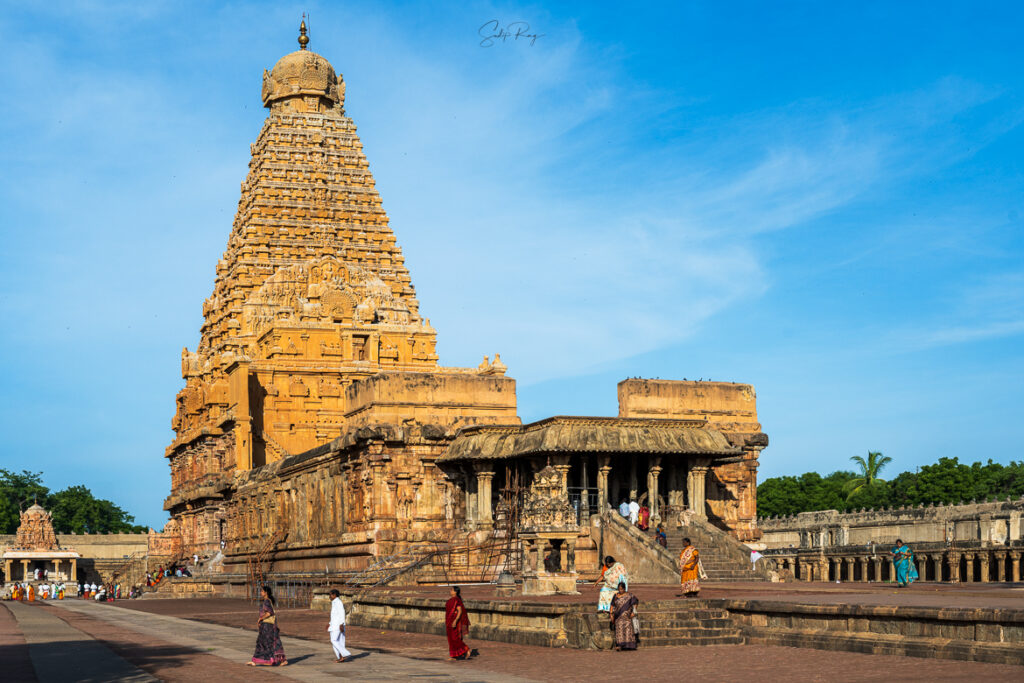
The Brihadisvara Temple is one of the largest Hindu temples. It is also regarded as one of the outstanding examples of Dravida style of temple architecture. The temple is also known as ‘Dakshina Meru’ or Meru of the south (Meru being the mythical, sacred mountain serving as the centre of all universes), as it was designed to represent cosmic structures in keeping with the Chola idealogy of equating temple, cosmos, and kingdom.
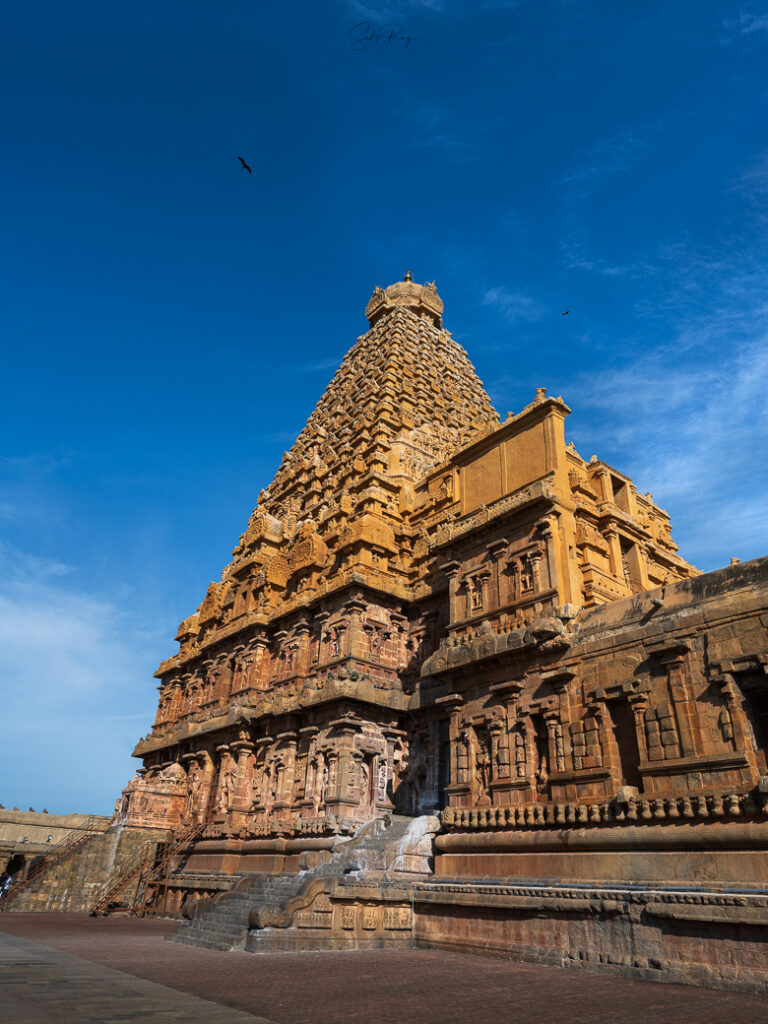
Built-in granite, Brihadisvara is a ‘Madakkoil’ type of temple, where a large temple is constructed upon a raised platform. The temple is entered through two gopurams, characterized by a plethora of excellent sculptures and barrel-vaulted roofs. As per the prevalent Hindu norms, it faces east. It is divided into five main sections – a Nandi mandapa, a mukha mandapa, a maha mandapa, a connecting antarala, and the ‘garbha griha’ or sanctum with the sky-kissing vimana. The vimana is over 65 metres high with 15 receding tiers and decorated with miniature ‘sala’ (rectangular), ‘kuta’ (square), and ‘panjara’ (apsidal) temples. One of the most fascinating features of Brihadisvara is its gigantic ‘stupi’, which weighs around 80 tonnes. It is popularly believed to have been dragged up to its current position along an inclined plane that had its base at a place called ‘Sarapallam’, which lies 6.44 km away. The master designers built the hollow tower by interlocking stones without using any binding material.
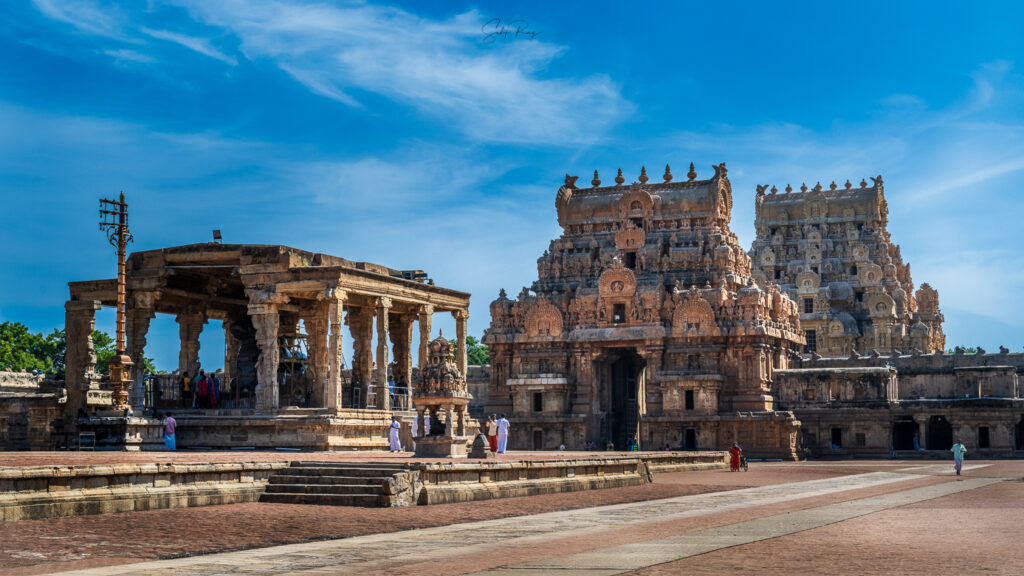
The temple is 240 metres long and 120 metres wide. There was no rock formation near the temple, so it had to be transported from quarries 50 km away. Among the remarkable technical accomplishments at Thanjavur is the volume of stone quarried from upstream near Tiruccirapalli and transported by water to the temple site.
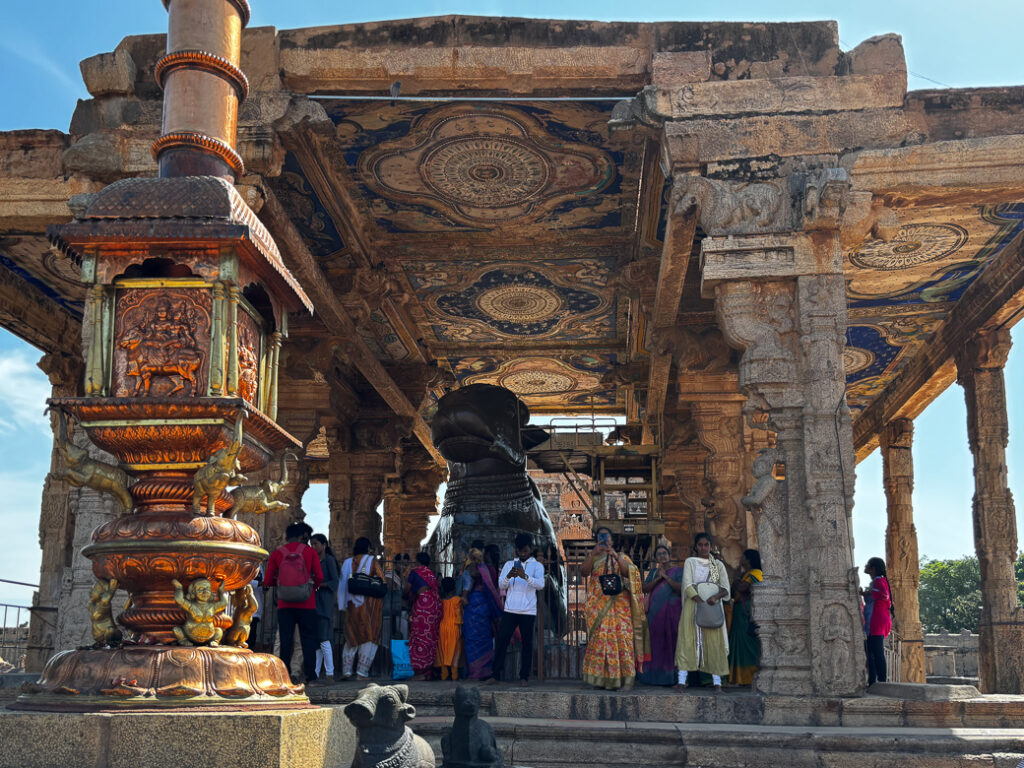
The massive platform is fully covered with inscriptions in elegant Chola Grantha and Tamil letters. Of these, 64 inscriptions belong to Rajaraja I, and 29 to his son and successor Rajendra I. The inscriptions mostly describe the achievements of Rajaraja I and his generous and skilful endowments meant for the upkeep of this massive temple.
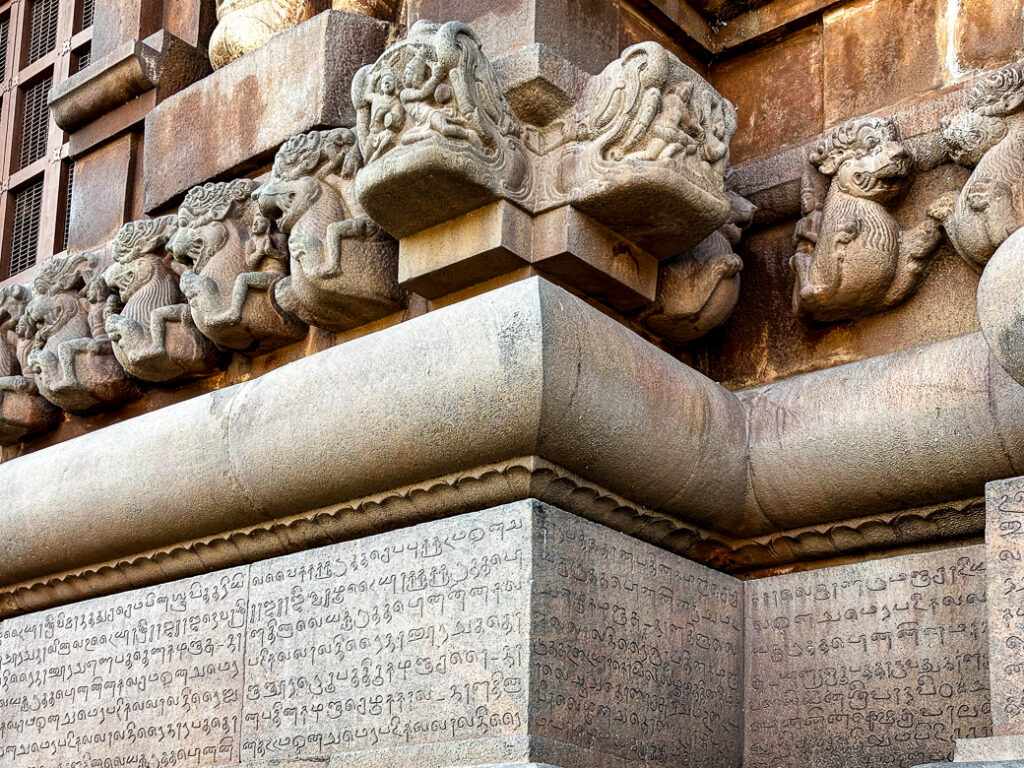
The outer walls of this stunning temple are laced with graceful sculptures housed inside ‘koshtha panjaras’ or niches. The lower niches depict Ganesha, Vishnu with Sri-Devi and Bhu-Devi, Lakshmi, Vishnuanugraha Murti, Bhikshtana, Virabhadra, Dakshina Murti, Kalantaka, and Natesa on the southern wall, Hari-Hara, Ardhanarisvara, Chandrasekhara on the west wall, Gangadhara, Sarasvati, Uma – Mahesvara, Mahisasuramardini, Chandrasekhara, Bhairava on the north wall. The upper niches on all walls contain Tripurantakas repeated in each niche.
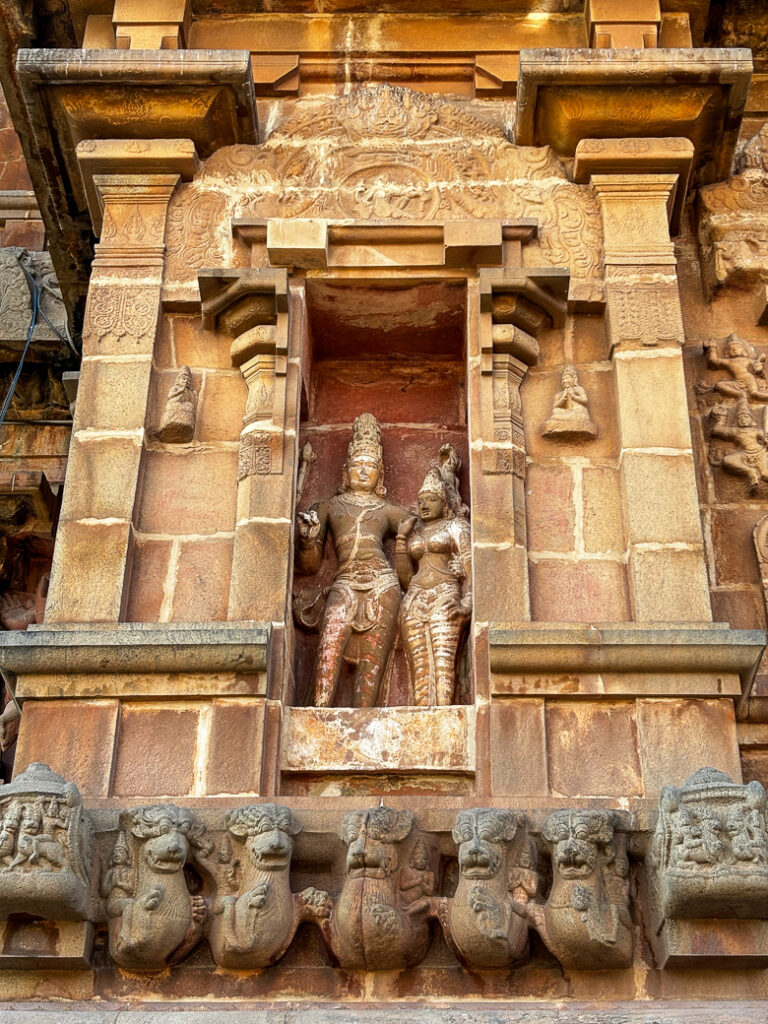
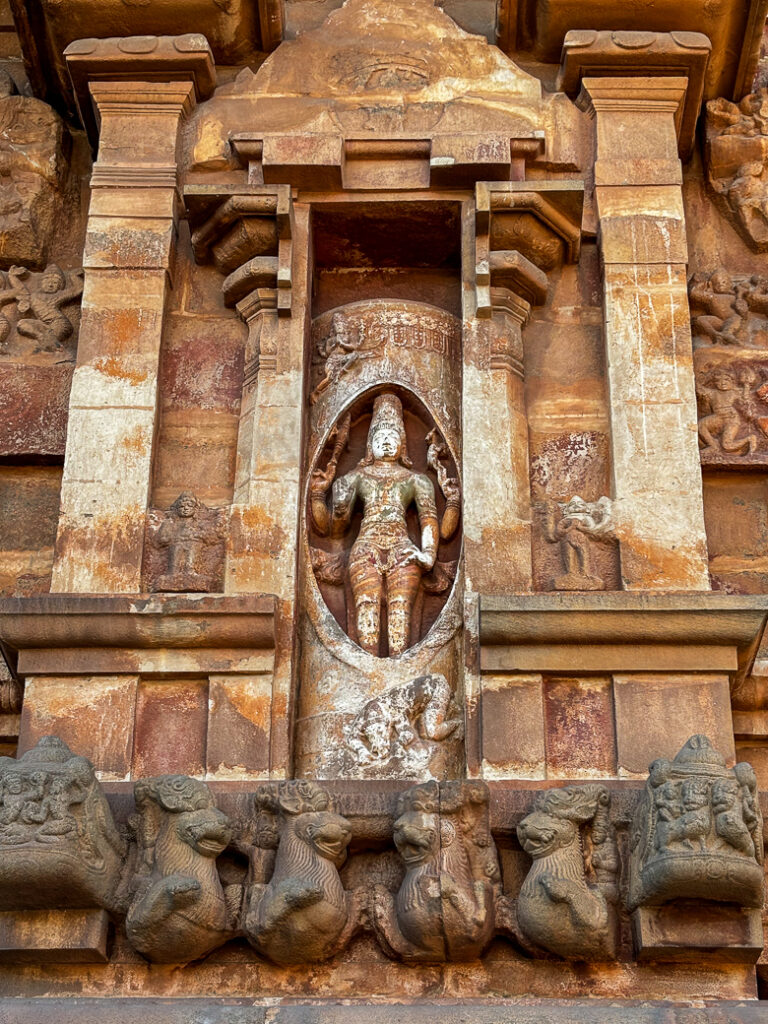
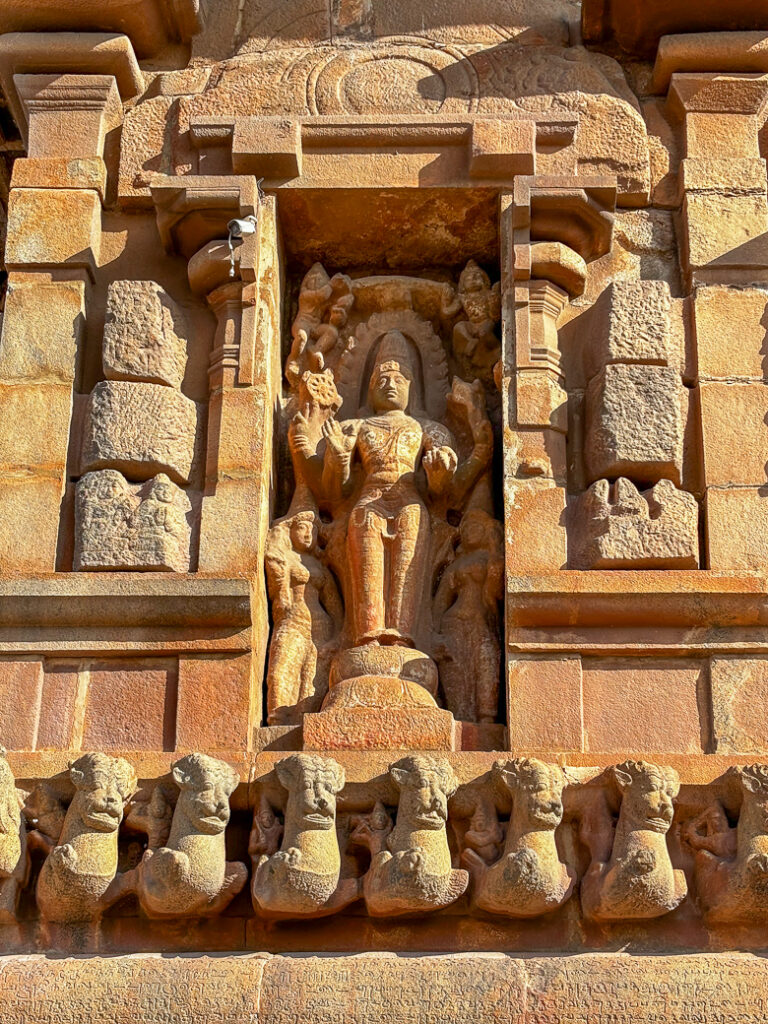
The innermost sanctum houses a linga named Rajarajesvaram – Udayar after Rajaraja I, its author. It is also called ‘adavallan’ or ‘One who can Dance Well’ and ‘Dakshina Meru Vitankan’. Both of these names are generally associated with the Siva linga of Nataraja Temple of Chidambaram, whom the Cholas greatly revered, and thus adopted by them for the linga of Brihadisvara. The enormous linga is 8.7 metres high and receives worship four times a day.
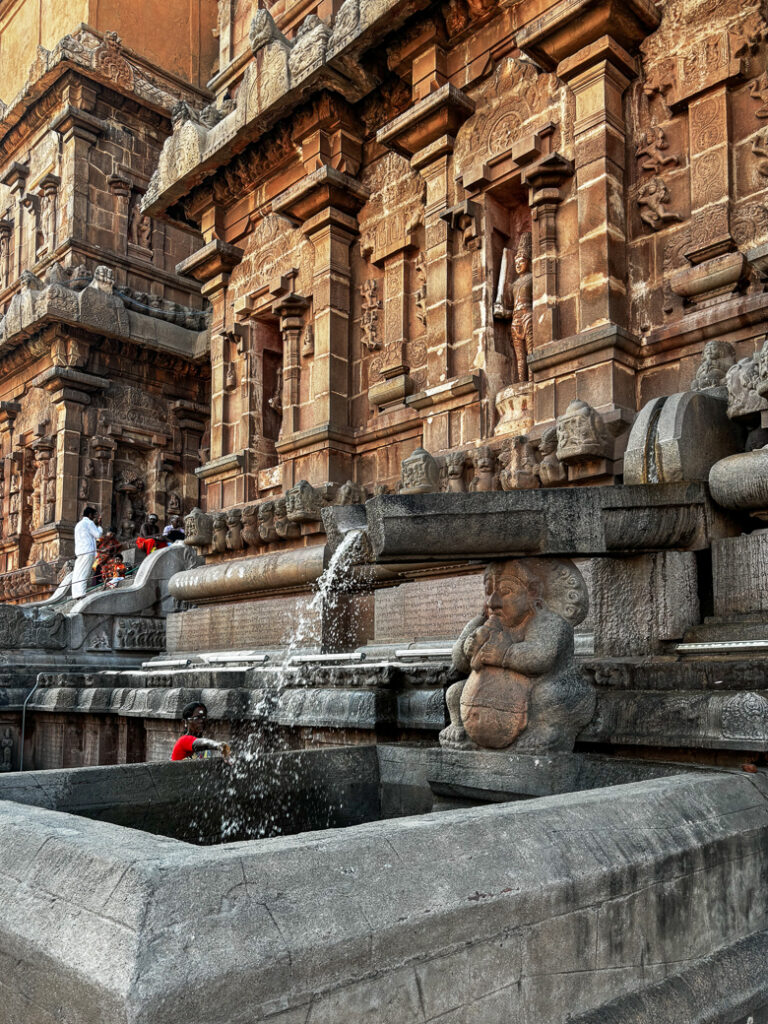
One of the most fascinating features of Brihadisvara Temple is the abundance of wall murals dating back to the times of the Cholas. The paintings are of exceptional quality and art experts put them in the same bracket as the more famous Ajanta Cave paintings. Most of the murals showcase Siva in his various forms such as Nataraja and Tripurantaka as well as Ganesha, Vishnu, Kali, Parvati, and the Nayanar sainta. One well-crafted mural depicts Rajaraja I with his guru, Karuvur Devar.
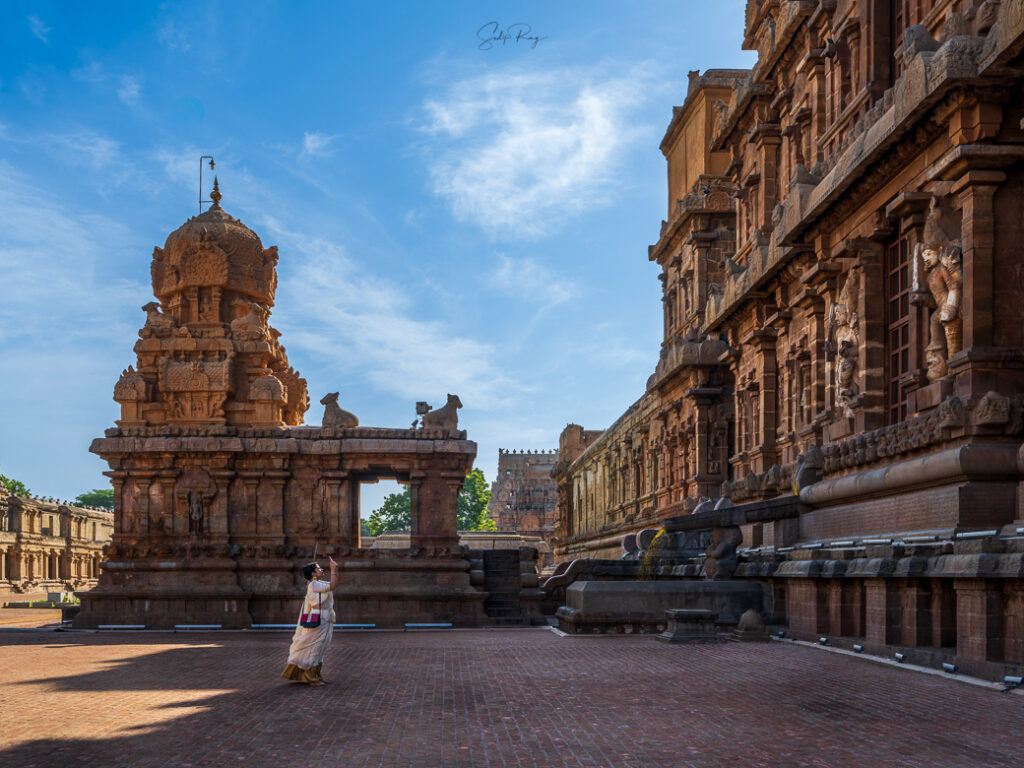
More vibrant paintings belonging to the Nayaka era are found on the inner walls of the cloister mandapa that surrounds the temple. The subjects of these paintings, found on the northern and western walls, include Gaja Lakshmi, Uma–Mahesvara, Sarasvati, Mahisasuramardini, self-immolation of Sati, royal processions, and so on.
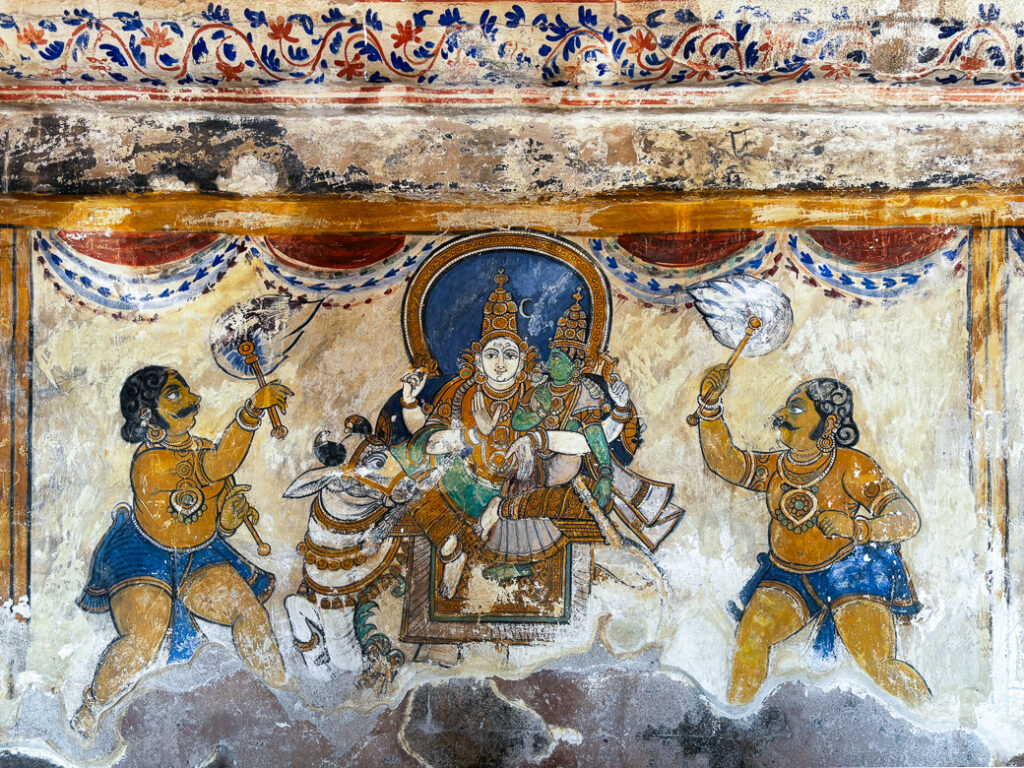
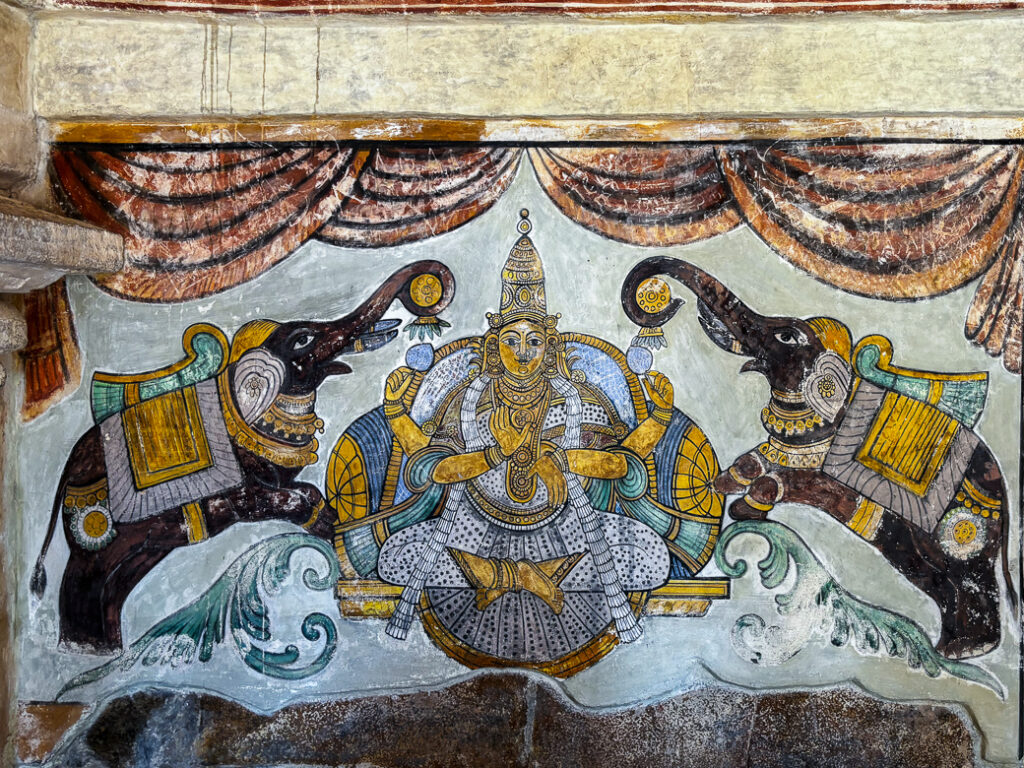
In its heyday, the temple had over 800 employees, including 400 temple dancers to entertain Siva and 50 musicians to recite the ‘tevaram’, the hymns composed by Tamil Nayanar saints.
The Brihadisvara Temple complex also includes a 13th-century Goddess shrine, a 16th-century Subhramaniyam shrine, and a Ganesha temple built by the Marathas.
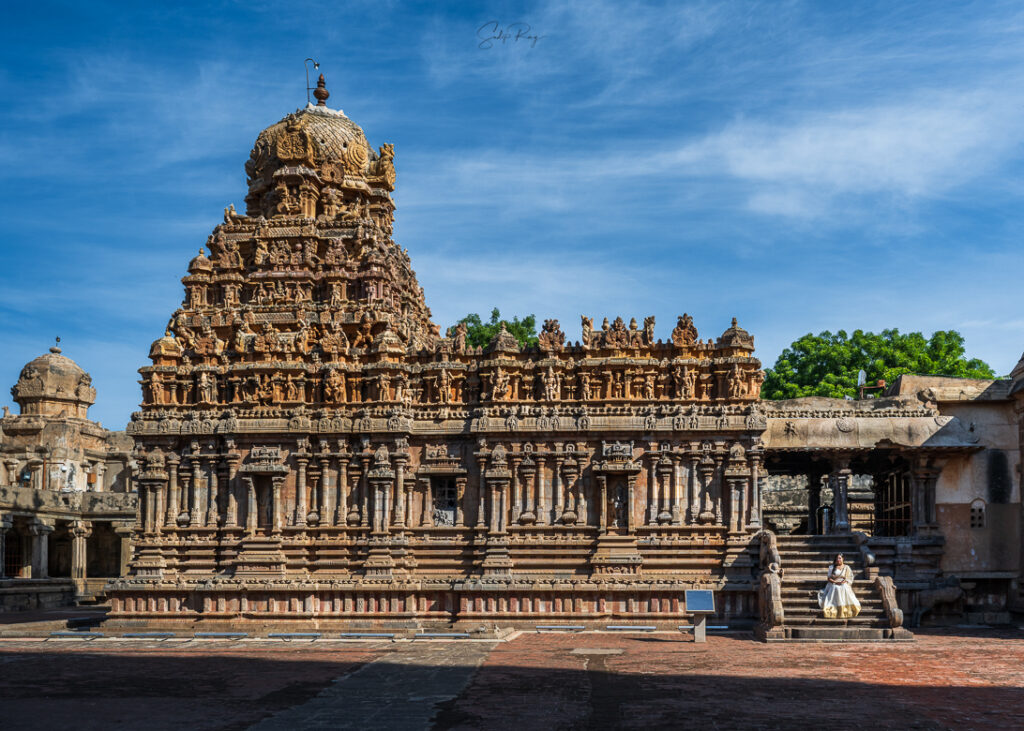
B. Brihadisvara Temple, Gangaikondacholapuram:
Rajaraja I’s able successor, Rajendra I, built a new capital to celebrate his victorious march up to the river Ganga in eastern India, and named it Gangaikondacholapuram or ‘City of the Chola who conquered the Ganga’. Rajendra also built the Brihadisvara Temple in his new capital to commemorate his military achievements, the structure of which resembles that of Thanjavur Big Temple.
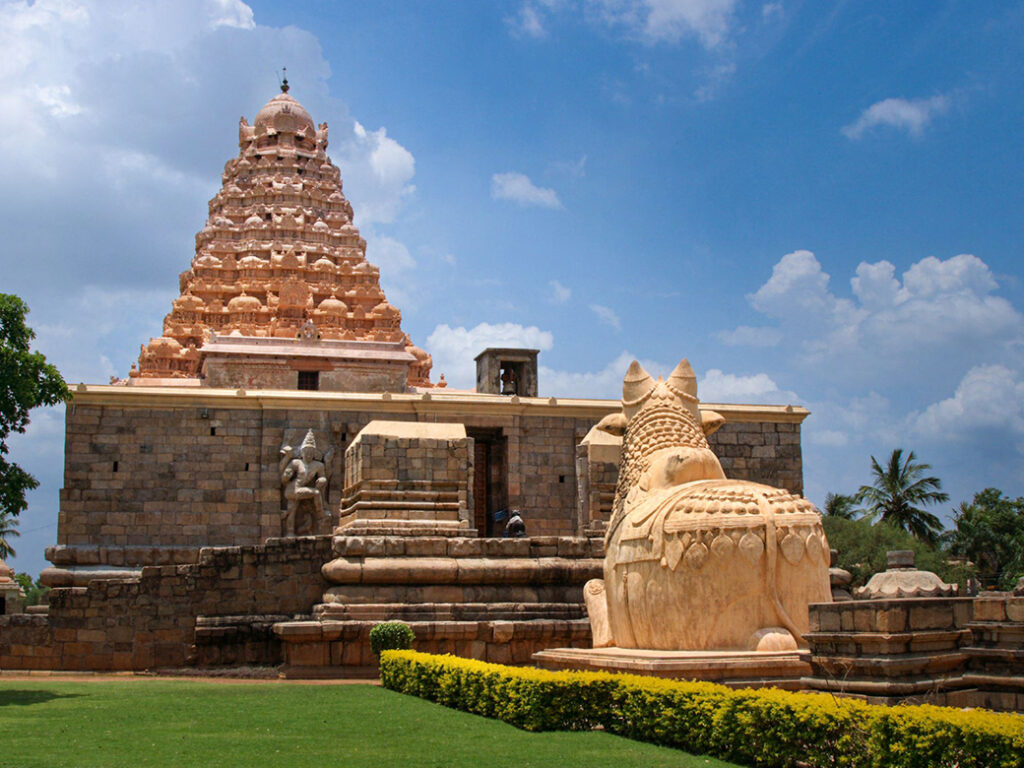
The temple is entered through a majestic gopura and the first thing to greet the visitors is a gigantic Nandi. The temple is approximately 106 metres long and 30 metres wide, composed primarily of Nandi Mandapa, Alankar Mandapa, Maha Mandapa, Mukha Mandapa, Ardha Mandapa, and Garbha Griha. The sanctum houses a 4-metre-long Siva linga. The vimana is 55 metres high and divided into 9 tiers.
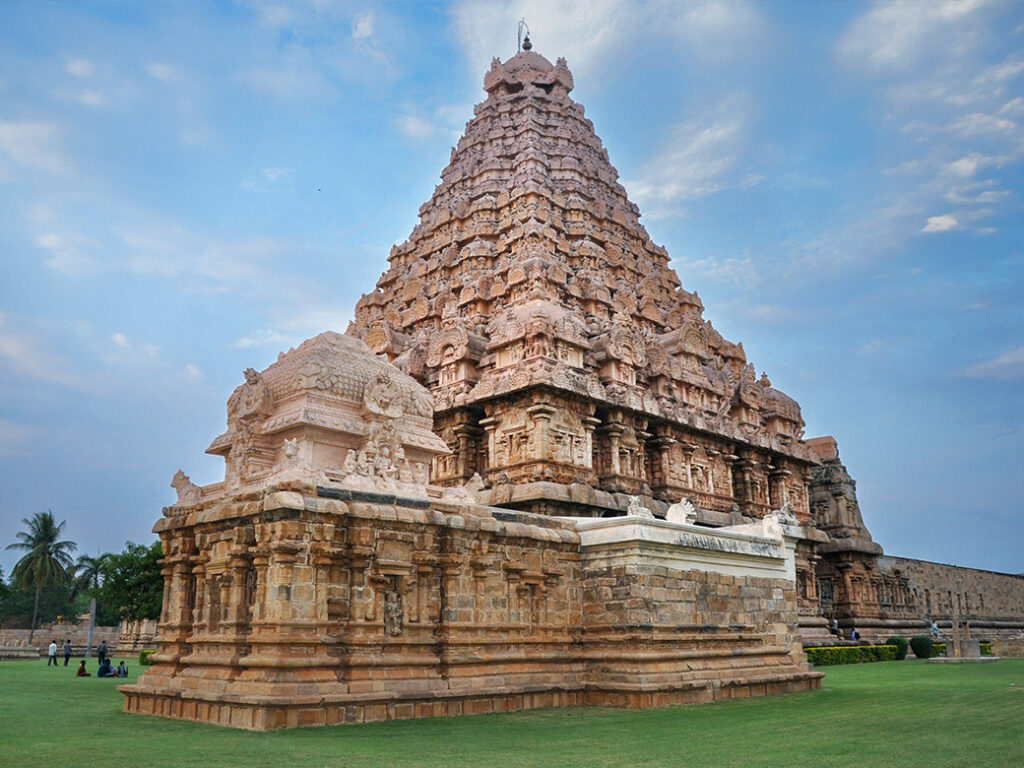
There are fewer sculptures here as compared to Thanjavur, though they are of the same workmanship. On the southern wall, the ‘koshtha panjaras’ or niches have dancing Ganesha, Ardhanarisvara, Hari-Hara, and Nataraja accompanied by Kali and Bhringi. To the west is Siva as Gangadhara, Siva as Uma-sahita, Kartikeya, Lingodbhava, Vishnu with his consorts, and Bhagiratha’s penance to bring Ganga down to earth. The northern niches contain carvings of Kalantaka, eight-armed Mahisasuramardini, Brahma with his consorts Savitri and Sarasvati, Bhairava, and Siva as Madanantaka.
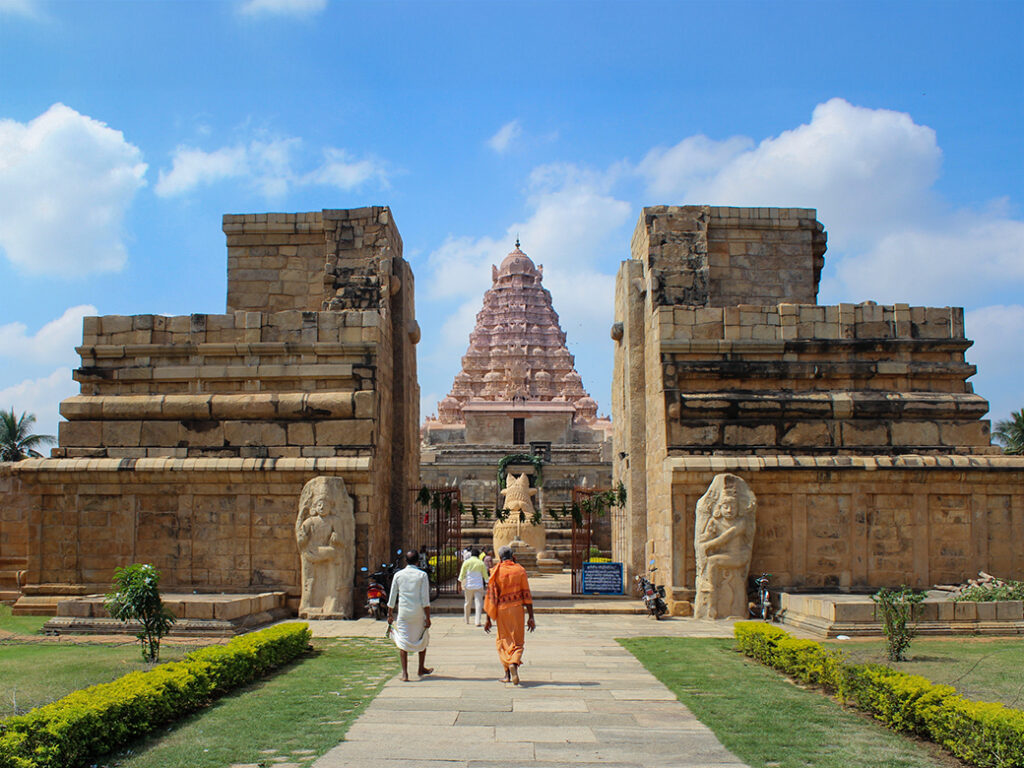
The base of the temple is covered with inscriptions. Though the twelve complete and deciphered inscriptions provide insights into the administrative structure of the temple as well as contemporary history, none of them belong to Rajendra.
C. Airavatesvara Temple, Darasuram:
The Airavatesvara Temple of Darasuram is located near the religious centre of Kumbakonam. It was built by Rajaraja II in the 12th century CE. This is one of the four Chola temples with stone vimanas and also constitutes the Great Living Chola Temples.
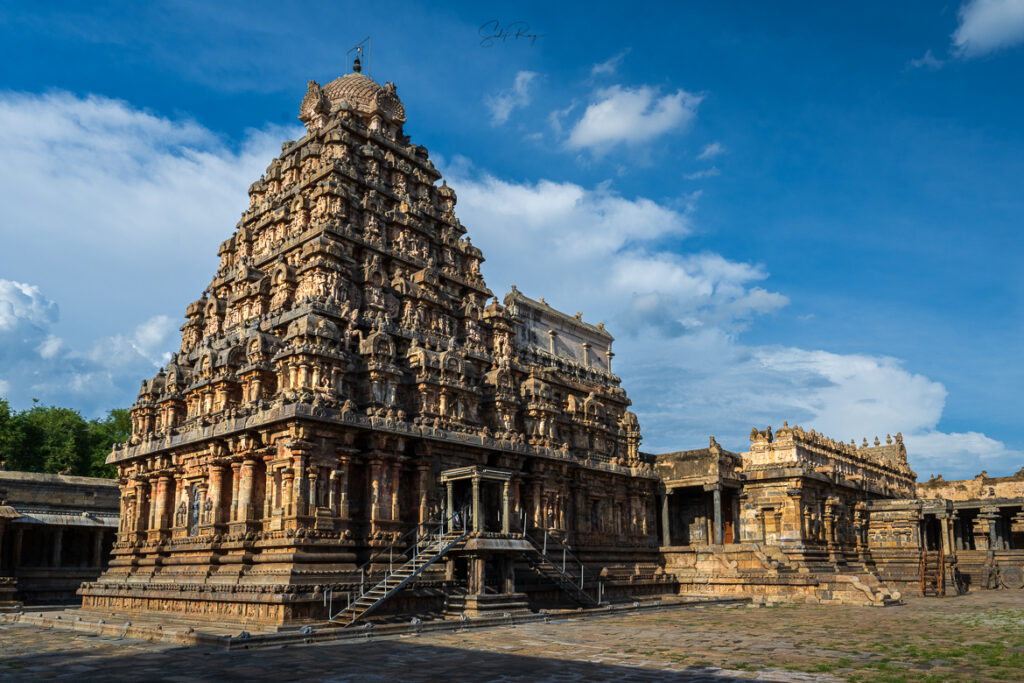
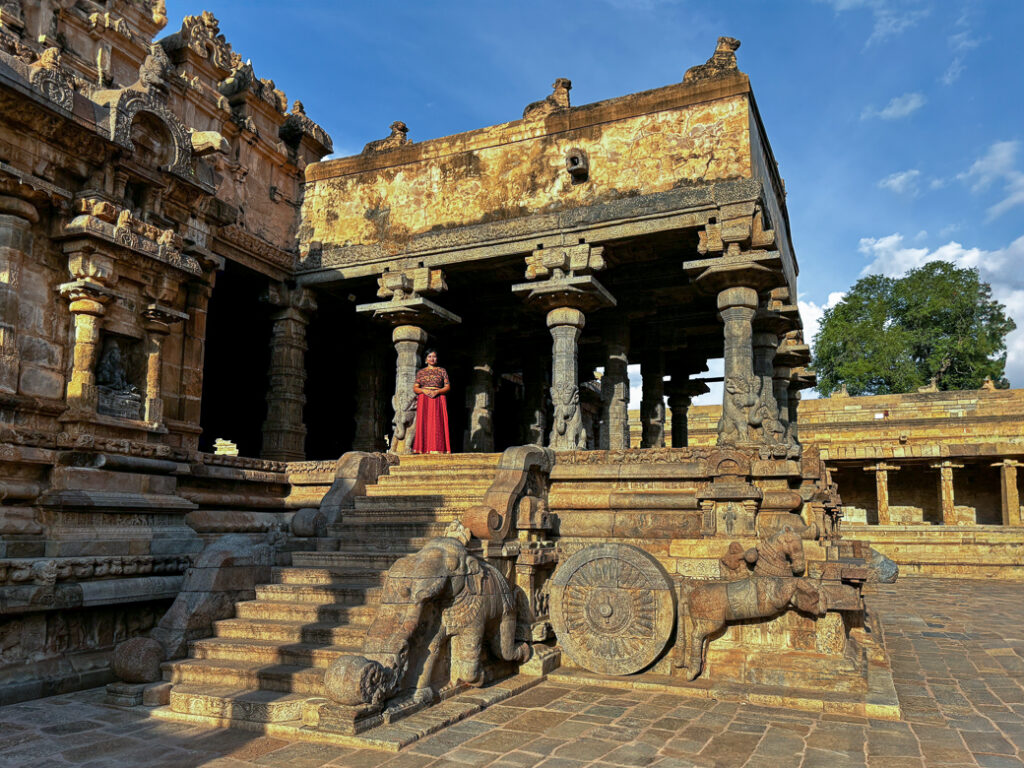
This stunning temple is dedicated to Siva. The linga is called Rajarajesvaram – Udayar. According to local belief, Indra’s white elephant, Airavata, recovered his pristine white colour after taking a dip in the sacred tank of this temple. Hence, the temple was named after Airavata, the heavenly elephant.
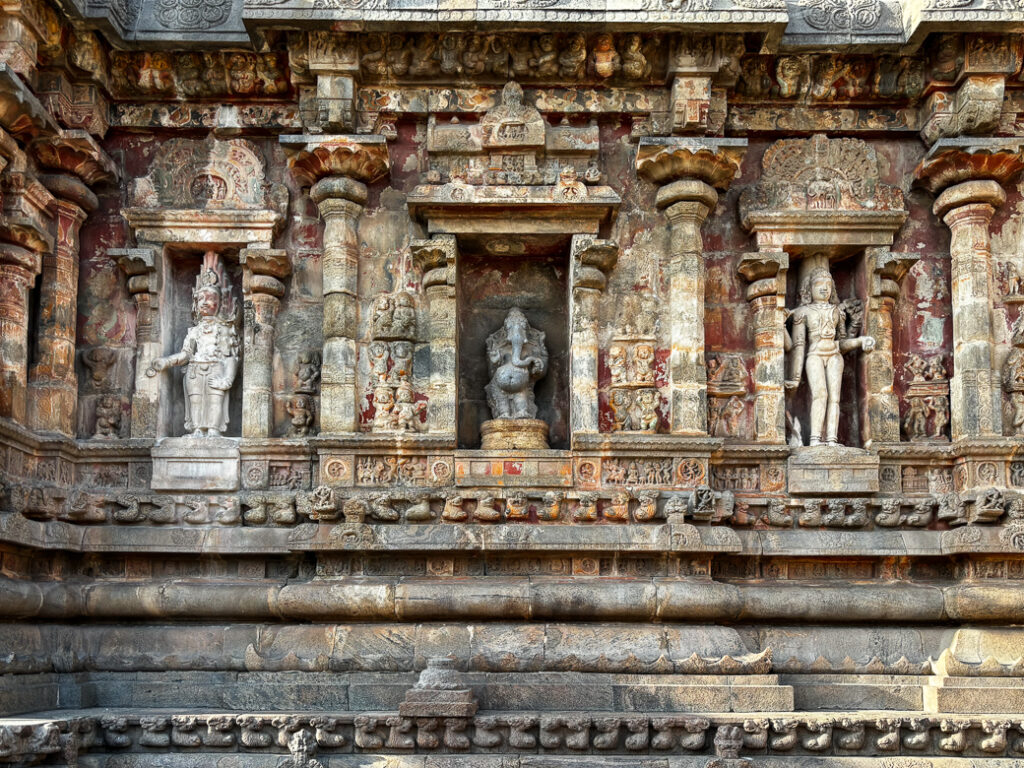
The Airavatesvara Temple has a square plan. It is a ‘Karakkoil’ type of temple, where the shrine is modelled after chariots. The astounding vimana is 24 m high, with five diminishing tiers. Above the fifth tier rests the circular griva with niches at cardinal points flanked by Nandi at the corners, and surmounted by a domed shikhara and a metal stupi. The sanctum or garbha griha is connected with the mukha mandapa through the ardha mandapa which is flanked by two massive dvarapalas. The mukha mandapa opens into a rectangular maha mandapa, supported by 48 decorative pillars. To the east of the maha mandapa lies the chariot-shaped agra mandapa.
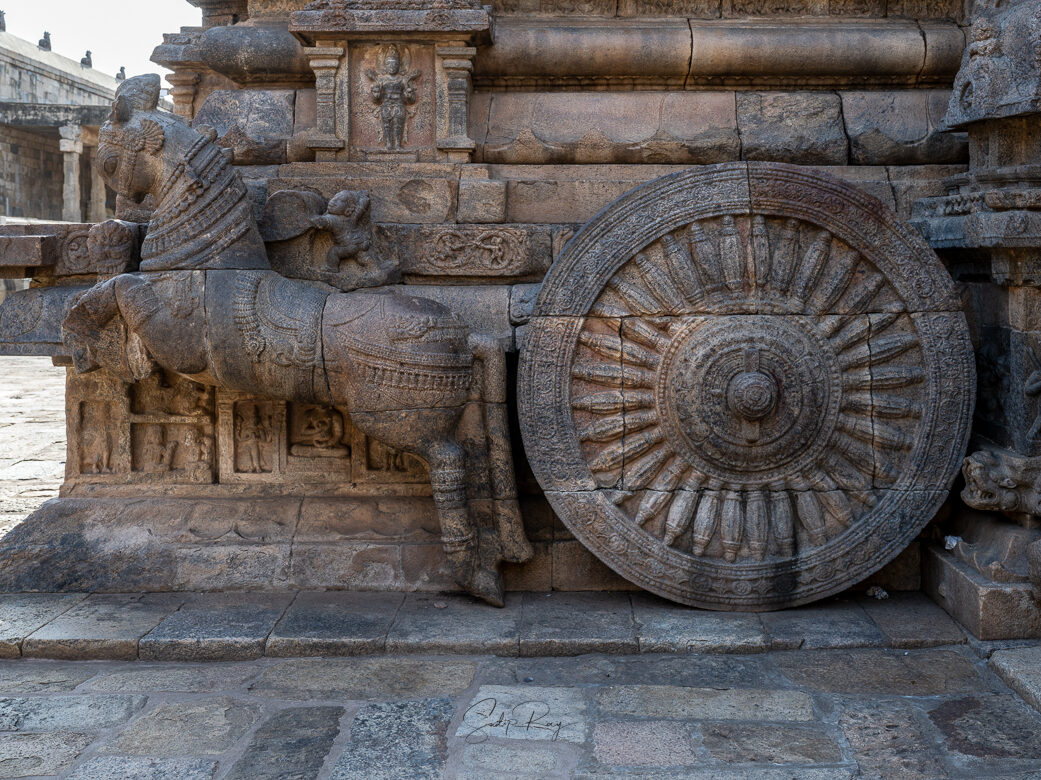
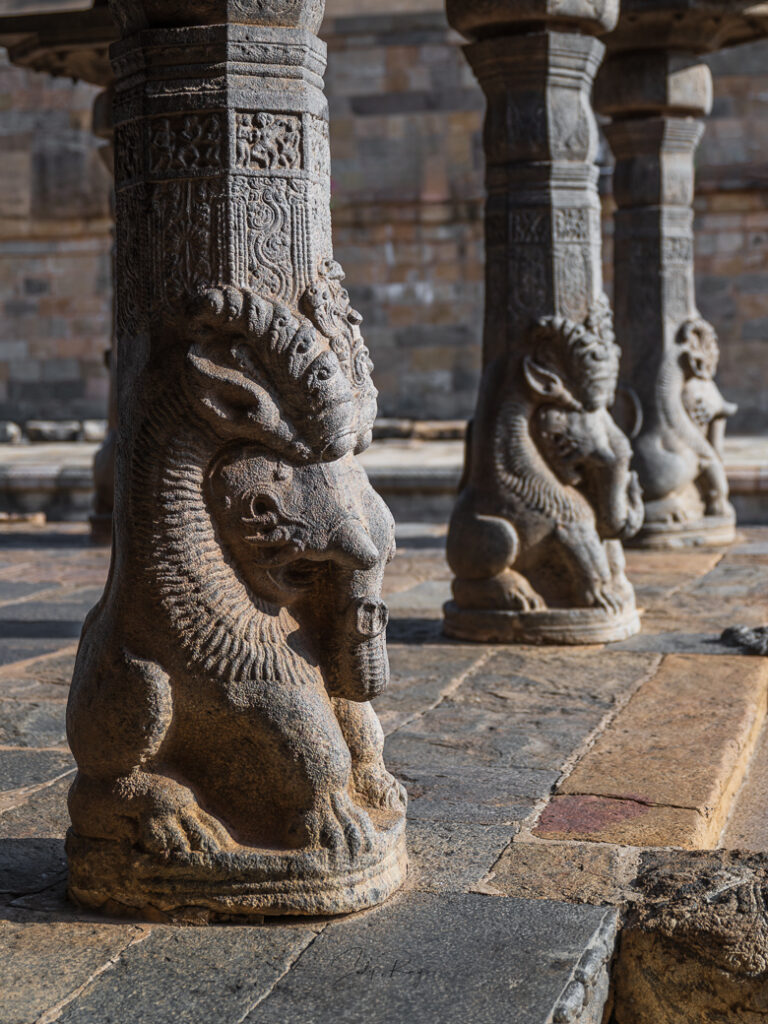
In its heyday, the Airavetsvara Temple had two gopuras. However, the upper portion of the larger gopura is completely lost. The second gopura is fully preserved and comprises a large prakara circling the temple and decorated with couchant bulls at regular intervals.
The temple is approached through the beautiful agra mandapa, which is equipped with a flight of steps to the east and west. It is conceived as the chariot of Tripurantaka, with wheels, hubs, and spokes carved in relief, and drawn by caparisoned horses. On the sides of the balustrades of the steps, there are lovely carvings of elephants mounted by ‘ganas’ called ‘sankha nidhi’ and ‘padma nidhi’.
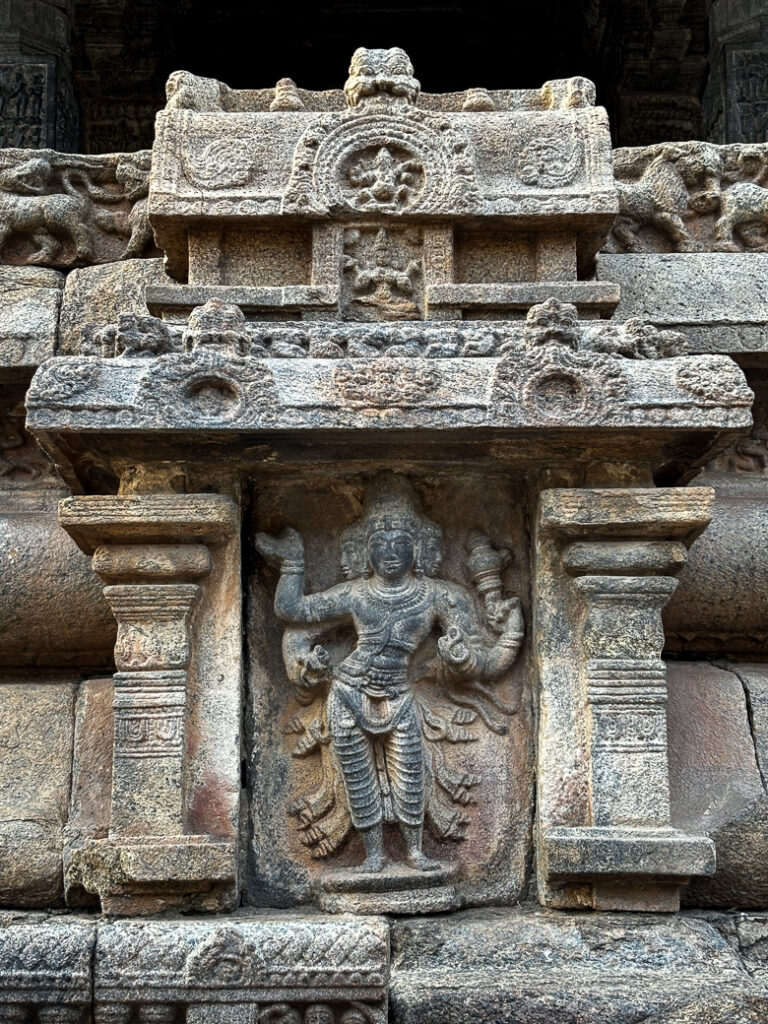
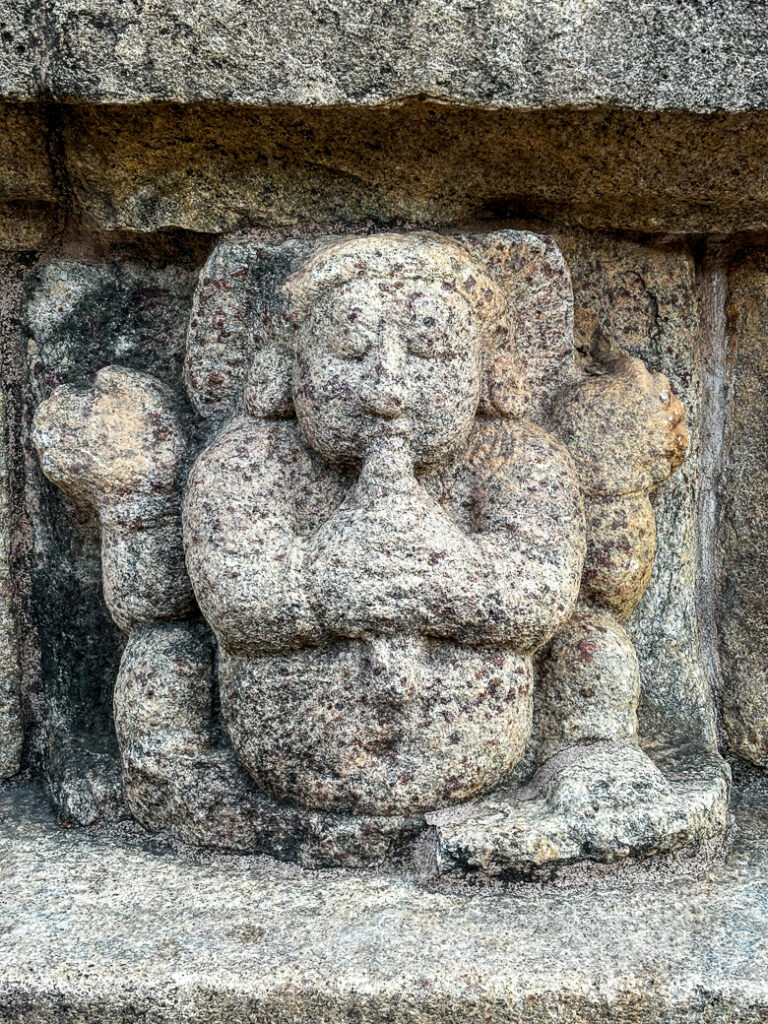
On ascending the steps, the intricately carved pillars of the mandapas grab all the attention. While the outer pillars are supported by squatting yalis, inside they manifest the ‘bodhika’ decoration. The rectangular portions of the pillars are carved with small panels illustrating mythological stories such as the penance of Parvati, the attack of Manmatha, Siva’s marriage, the birth of Kumara, and so on. The ceiling is equally ornate, bearing sculptures of dancers and musicians. They bear testimony to this temple’s main theme of decoration, ‘nitya vinoda’ or perpetual entertainment.
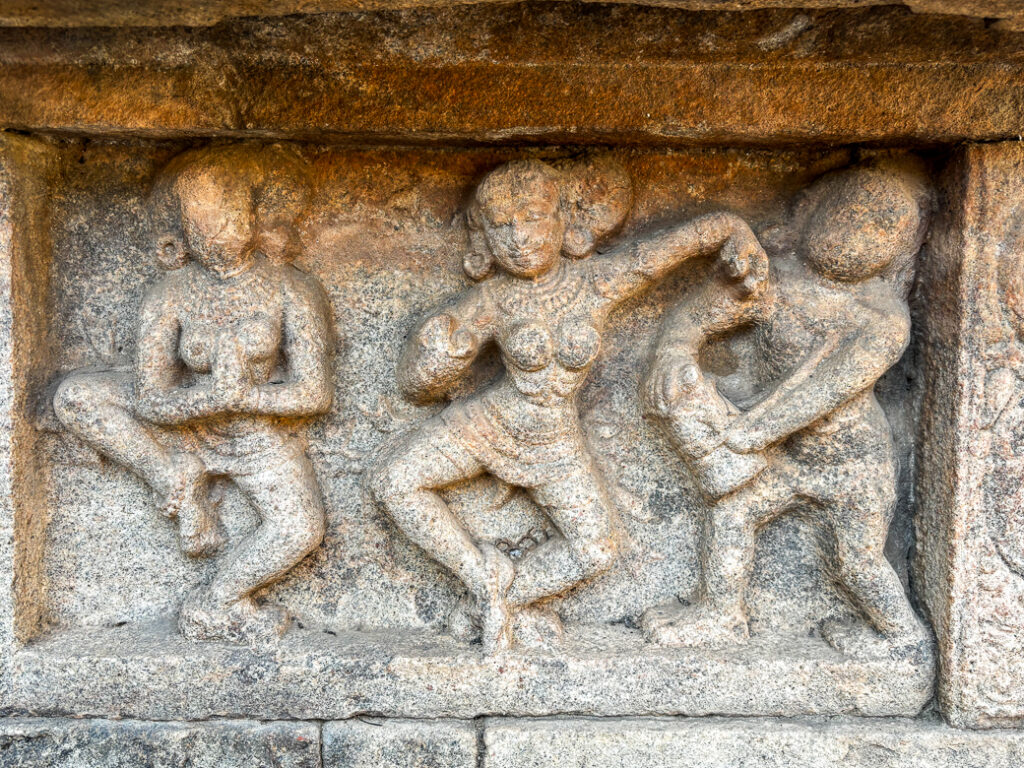
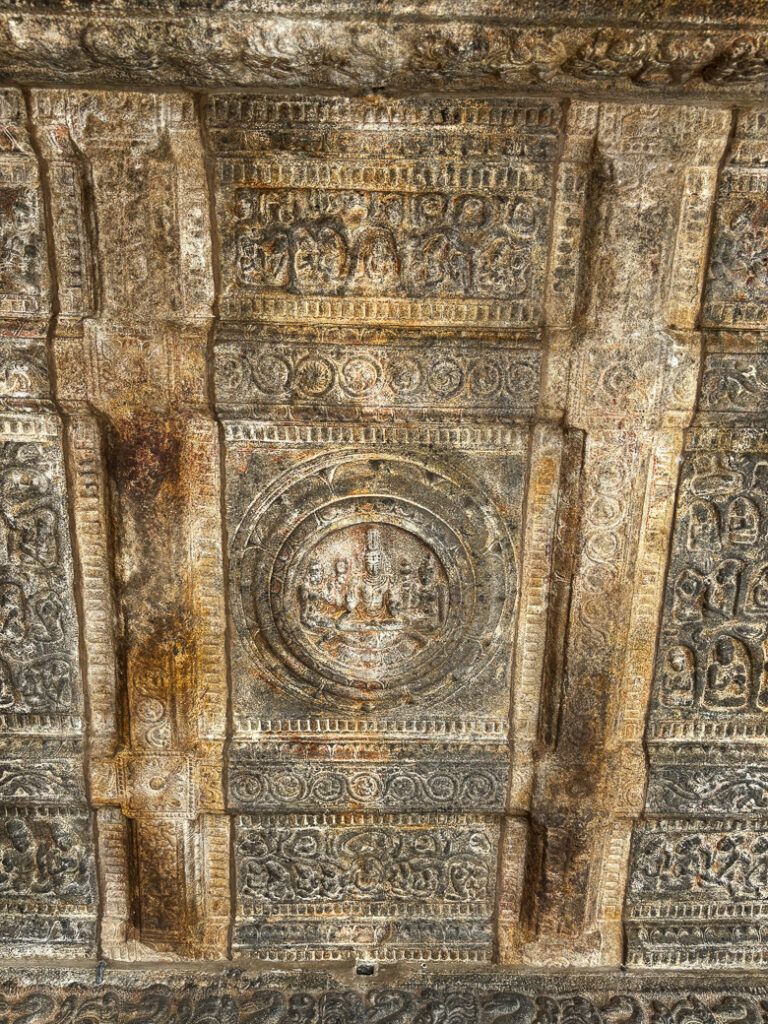
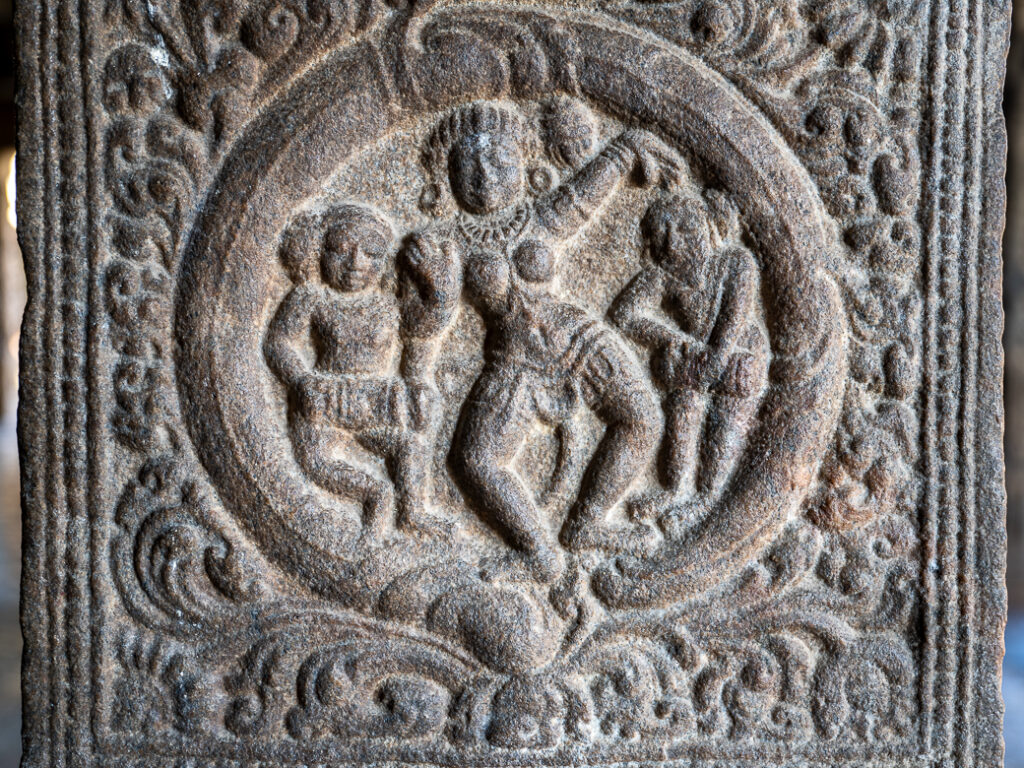
The walls of the temple contain niches, some of which still showcase fantastic specimens of early Chola sculptures like a fine Ardhanarisvara with three faces and eight arms, a four-armed Nagaraja with snake hoods over his head, a dancing Martanda Bhairava with four arms and three heads, Dakshina Murti attended by sages, Lingodbhava Siva, Mahisasuramardini, Siva as Tripurantaka, multi-armed Gajantaka destroying a demon in the guise of an elephant, and a Mahesa Murti.
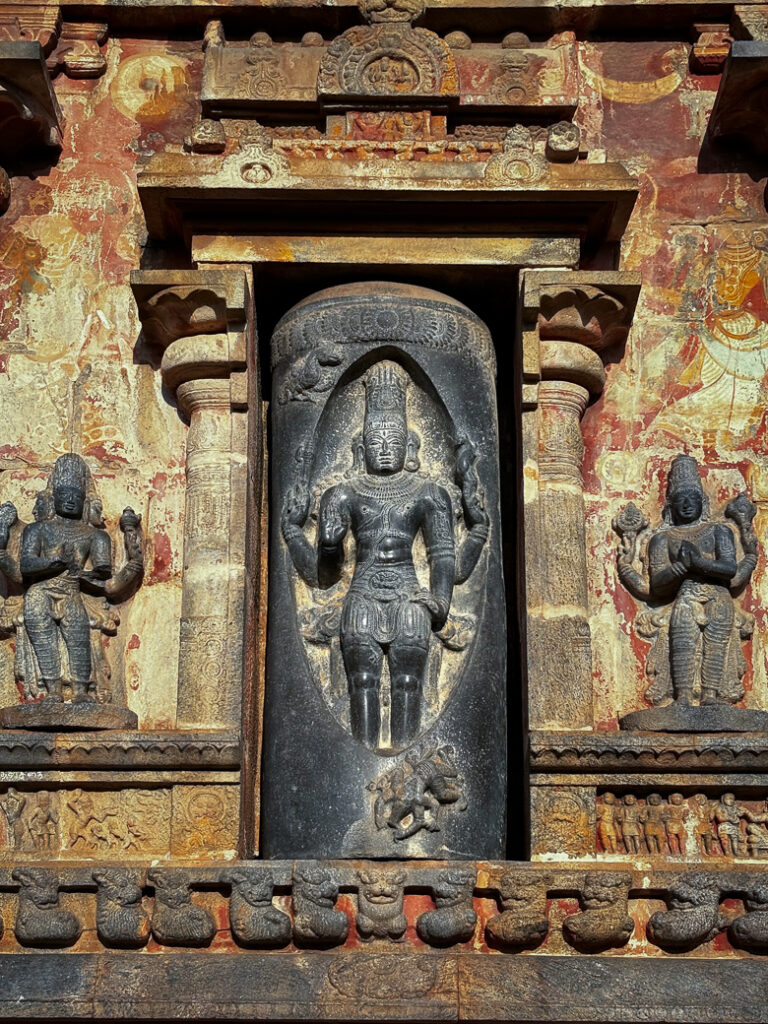
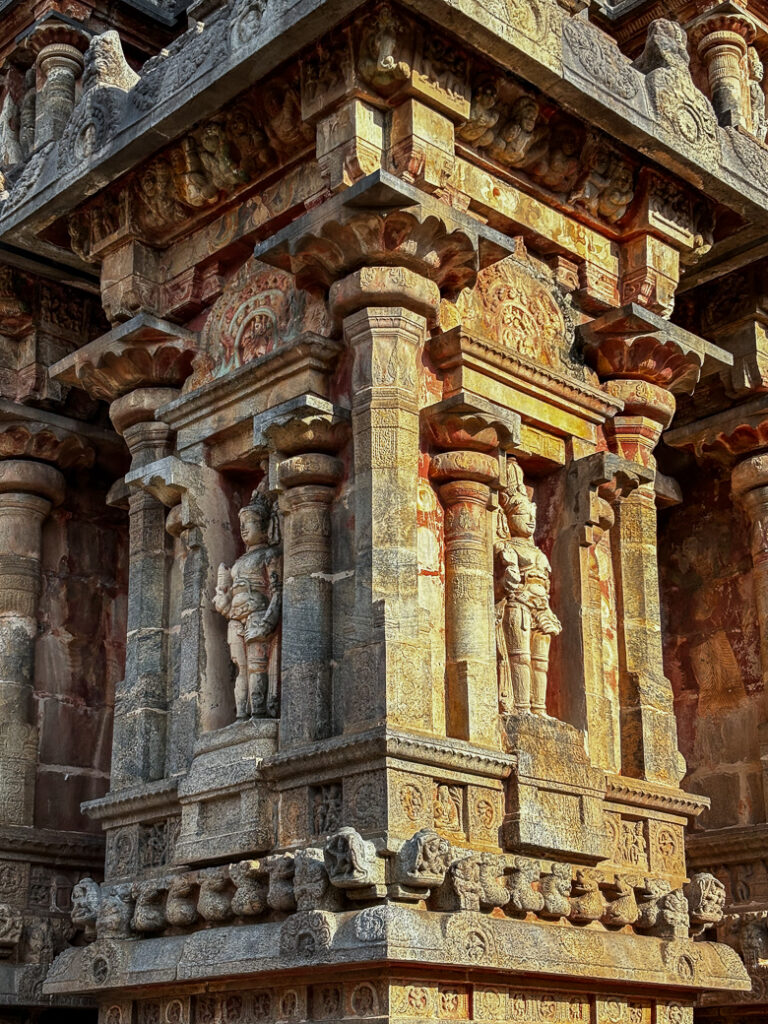
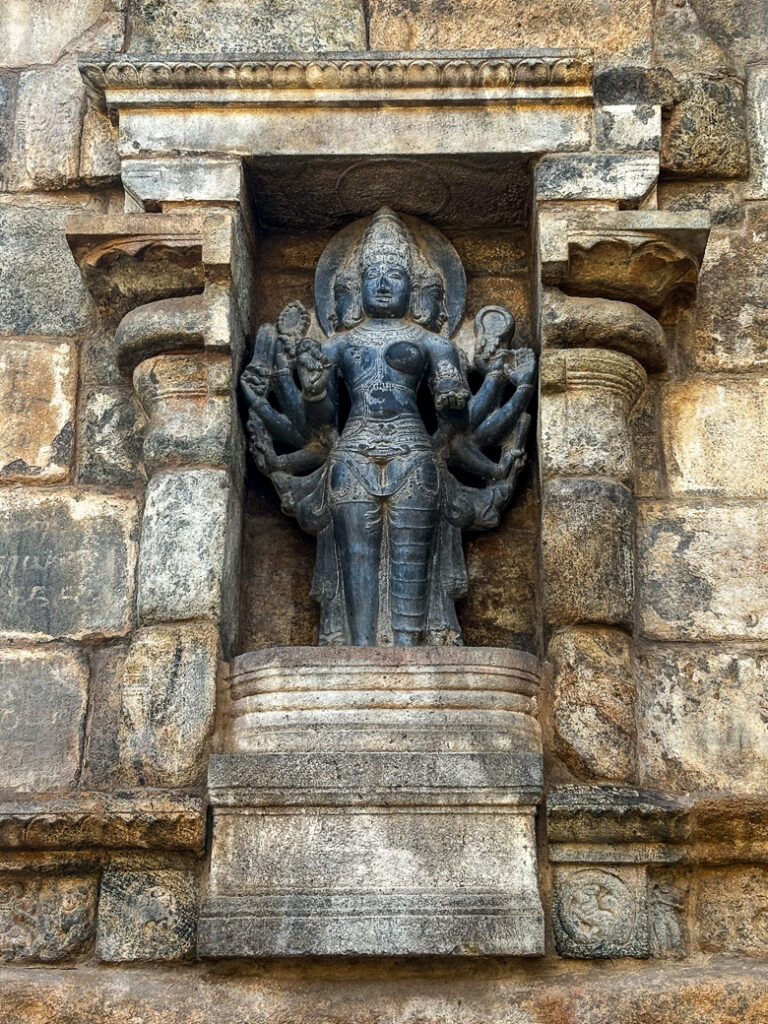
Important FAQs:
Where are the Great Living Chola Temples situated?
The Great Living Chola Temples are located in and around Thanjavur, Tamil Nadu. Rajaraja I’s Brihadisvara Temple is situated in Thanjavur, while Rajendra’s Brihadisvara Temple stands in Gangaikondacholapuram and Airavatesvara Temple in Darasuram near Kumbakonam.
Thanjavur is 344 km away from Chennai and 57 km from Tiruchirappalli. From Thanjavur, Gangaikondacholapuram is 80 km away, while Darasuram is 35 km.
How can I reach the Great Living Chola Temples?
It is best to make Thanjavur your base and then explore the Great Living Chola Temples.
- By air: Thanjavur’s nearest airport is Tiruchirappalli. Though frequent flights to Tiruchirappalli from most of the major south Indian cities are available, connectivity from other parts of India may be an issue. Hence it would be wise to fly into Chennai, which is very well-connected with every part of India.
- By train: Chennai is also well linked by railways with the rest of India. From Howrah, you can board 12839 Chennai Mail, from Shalimar 12841 Coromandel Express, from New Delhi 12622 Tamilnadu Express and 12616 Grand Trunk Express, from Mumbai 22179 Chennai Express, and from Bengaluru 12028 Shatabdi Express and 20608 Vande Bharat Express.
From Chennai, you can easily reach Thanjavur by train, such as 22675 Chozhan Express and 16865 Uzhavan Express.
- By bus: Daily TNSTC buses from Chennai, Tambaram, and Tiruchirappalli ply to Thanjavur.
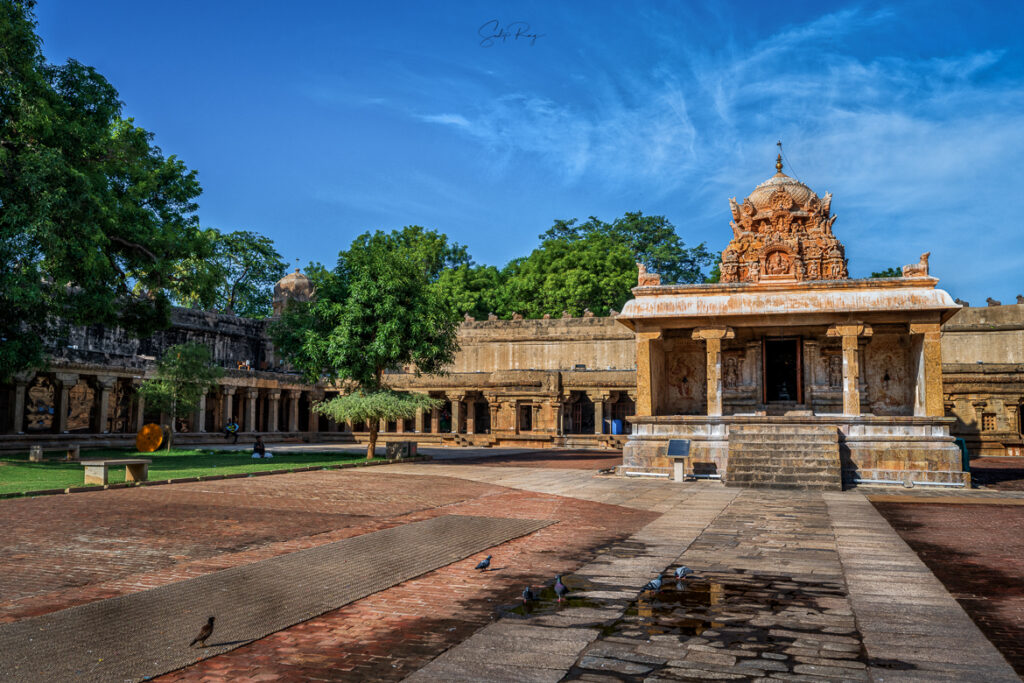
Is there any entry fee for the Great Chola Living Temples?
No entry fee is required to visit these temples.
What are the timings of the Chola Temples?
Like every other temple in Tamil Nadu, the three Chola Temples remain open from 6 AM to 12 PM and again from 4 PM to 8 PM. We found that unlike other monuments maintained by the Archaeological Survey of India, these temples do not remain open from 6 AM to 6 PM.
What is the best time to visit these three temples?
Although Tamil Nadu remains more or less hot and humid around the year, October to February is comparatively cooler. Also, try visiting the temples early in the morning. Temperature soars as the day proceeds making it uncomfortable to explore the temples.
Where can I stay in Thanjavur?
We stayed in Svatma, which is a heritage property. You can also look for Sangam Hotel and Hotel Gnanam. Gangaikondacholapuram and Darasuram do not have any reliable hotels.
Where to eat in Thanjavur?
Thanjavur has some interesting and nice restaurants where you can try Tamil cuisine such as Thillana, Vasantha Bhavan, and Pattukottai Kamatchi Mess.
For Karnataka Temples, visit our blogs here.
